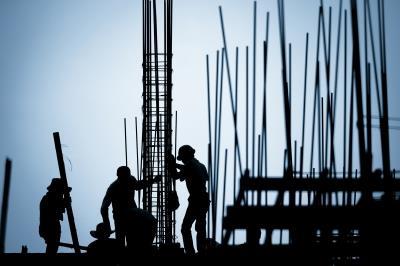Failing to keep pace could result in firms losing business

Failure to keep pace with new technologies is one of the biggest risks facing the construction industry, according to John Roberts, construction industry leader at Willis Towers Watson.
Speaking to StrategicRISK, Roberts notes there is a real risk of companies being too slow in adopting new methods of working and then suddenly finding that foreign competitors are coming into their home territory and taking work from them.
One of the technologies that is changing the industry is an increase in modular construction, where major components of buildings are being built in factories, delivered to site and put together “like a Meccano set”, Roberts says.
“All the finishes would be done,” he explains. “A hospital ward, for instance, could be fully fitted in the factory with everything, including beds, chairs, medical gasses and heating. A new hotel in London was recently built at a rate of ten rooms a day because they were modular. The rooms were being built in Slovakia and being sent over 20 at a time. The structural steel work could be done and they would just slot them in. And by the end of the day they had another floor of rooms completed.”
Construction companies have no choice but to adopt these technological changes, but they come with new risks and challenges, such as supply chain issues.
“What happens if that factory in Slovakia has built 30 rooms, have them all stockpiled for delivery, but then the factory burns down or gets flooded? The delay to the project while replacement bespoke stock is remanufactured can be huge. What happens if the ship, bringing those critical items for a nuclear power station for example, sinks and they lose critical components of a nuclear reactor or a turbine? The construction company may have spent many years to build the project, but if it then loses a piece of critical equipment that takes three years to build, all of a sudden that project is delayed by three years.”
Another technology that is set to change the construction industry is 3D printing or additive manufacturing. However a major issue for building critical components of engineering equipment is quality assurance.
Roberts mentions the example of Dutch 3D printing firm MX3D, which 3D printed a steel bridge across a canal in Amsterdam. “How do you know that when you build one bridge, the next one and the next one are going to be exactly the same and to the same standards? When you put powder into one end and these machines build the bridge from the powder, how do you know it is exactly the same each time they make it? It’s like making a cake: one day it’s fantastic, but the next day you forget to put an egg in or you add salt instead of sugar and the cake tastes awful. For a cake it doesn’t really matter, but if you’re doing that on a building.”
While the construction sector is facing an array of issues, there is also plenty of opportunity. The government has committed itself to a lot of mega infrastructure projects such as HS2, Crossrail and nuclear power plants. At the same time it is also focusing on roads, education and housing.
To meet the demand, the UK construction industry will need to recruit about 236,000 workers over the next ten years.
“At the same time, we might lose 215,000 European workers due to a hard Brexit, so potentially all of a sudden that 236,000 is going up to almost half a million,” Roberts says. “We’ve suddenly got this skills shortage of both skilled labour, by which I mean craftsmen, and the technical professional sector, which are the engineers, the designers and the architects. So the question is, where will they come from?”





















No comments yet